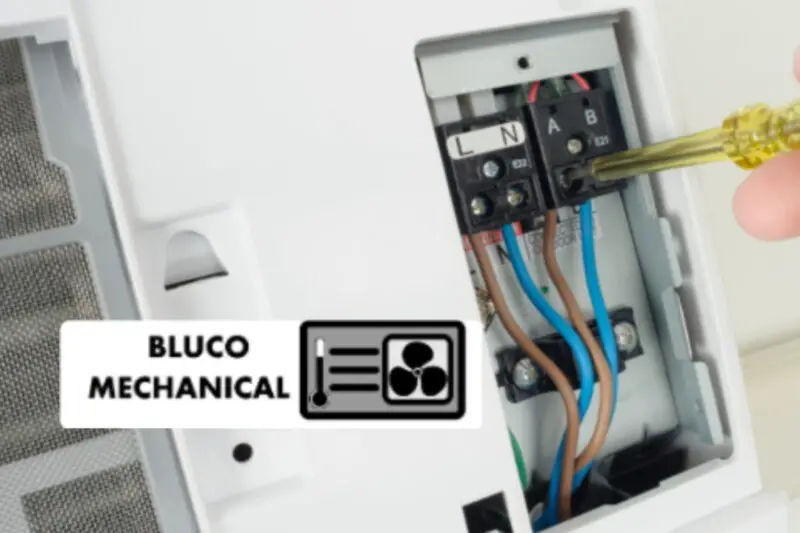A lot of individuals are perplexed about PTAC units. What does the acronym stand for in HVAC, what PTAC is, what are the Problems Common With PTAC Units, and so on are frequently asked questions. Call our ptac ac unit installation specialists at (929) 447-2077 if you have any further HVAC questions or need assistance!
In brief, we intended to address all of these concerns with these units. Furthermore, it will demonstrate which PTAC units are the best on the market and how to judge if they are good simply by looking at the specifications. You will find a spec-by-spec comparison of the top units further down; you can look at it to get a sense of what PTAC units are.
PTAC is an abbreviation for Packaged Terminal Air Conditioner. Despite the moniker “Air Conditioner,” this HVAC machine can deliver both cooling and heating. They are self-contained units that do not require substantial ducting to install. In some ways, comparing these units to mini-splits reveals that PTAC units are extremely similar to mini-splits.
Commercial air conditioners often use packaged terminal air conditioners.

- Hotels.
- Motels.
- Hospitals.
- Apartment structures and condominiums
- Housing for the elderly.
- Sunrooms.

These types of devices can have cooling/heating output ranging from 8,000 BTU to 20,000 BTU. The most popular option is the 12,000 BTU PTAC unit, which can chill and heat spaces up to 600 square feet in total square footage.
Before we get into which PTAC units are the best, let’s take a look at the advantages and downsides of these units. To be sure, there are numerous typical issues with these units that we must address. We’ll also go over the six specifications you should look for when comparing different PTAC units:
The Benefits of PTAC Units
Prior to the development of high-energy efficient mini splits (particularly top DIY mini-splits AC/heat pump units), Packaged Terminal Air Conditioner systems provided numerous advantages.
The following are some advantages of packaged terminal air conditioners:
Heating + Cooling (Year-Round Usage).
The flexibility of these units in particular to provide cooling in the summer and heating in the winter, for example, makes them essential for all-season hotels. Prior to micro splits, only ducted HVAC systems could provide both heat and cooling.
Installation is simple.
PTAC units are simple to install because they do not require ductwork. You only need to install the indoor and outdoor units, drill a hole in the wall, and run the refrigerant and communication lines. The most difficult challenge here is drilling a hole in the wall.
New PTAC Units Have a Higher Energy Efficiency.
Packaged Terminal Air Conditioner units were not precisely energy efficient in the past. Today, you can easily obtain an energy-efficient PTAC unit with an EER value of 10 or above (Energy Efficiency Ratio). This indicates they will have lower cooling and heating expenditures (high HSPF rating of 8+).
Affordable.
These units are less than $1,500 in price. They are quite inexpensive when compared to central air conditioning systems, which can cost $10,000 or more. Even when the price per ton is considered (since central air units have a higher tonnage), PTAC units are significantly less expensive than central aircon.
Nonetheless, the flaws and common issues with Packaged Terminal Air Conditioner units are well documented. When comparing PTAC units to mini splits, PTAC units are not as excellent a choice as these high-energy efficient mini split air conditioners:
The Most Common PTAC Unit Issues (Disadvantages)
One disadvantage of PTAC units is that they are less efficient than mini splits. New Packaged Terminal AC units are fairly energy efficient, but they cannot compete with micro splits rated at 20 SEER or more. That means these units have a more efficient option.
- There is no zone control. Multi-zone mini splits can have multiple air handlers to meet your cooling and heating requirements in any room. These units are typically installed in a single room and cannot be relocated to offer cooling and heating to additional rooms. With Packaged Terminal Air Conditioner units, you cannot have zone control and the comfort that comes with it.
- Packaged Terminal AC Is Considered Outdated Technology. Because HVAC manufacturers have focused their engineering teams on improved micro splits, you won’t see many new units created. As a result, you’re stuck with outdated devices that lack current features like WiFi connectivity.
- Typically, they produce less than 15,000 BTUs. When compared to micro splits and central air conditioning systems, Packaged Terminal Air Conditioner units are modest. A handful of them has cooling and heating outputs of more than 15,000 BTU. Most PTAC units have a 1-ton (12,000 BTU) or 1.25-ton output (15,000 BTU).
Mini-splits outperform PTAC units in terms of specifications. And we haven’t even mentioned the frequent issues with PTAC units.
The following are some of the issues that PTAC units have in common:
- Water leaks inside the room on a regular basis. Leaking indoor units is not something you want to witness.
- Variations in temperature. Because they lack cooling and heating output, Packaged Terminal AC units cannot maintain a steady indoor temperature in extreme heat (summer) or extreme cold (winter) (winter).
- PTAC issues include not blowing cold or heated air. Older units are infamous for being a little ‘strange.’ They blow cool air in the winter and warm air in the summer.
Problems caused by outdated technologies Mechanical action is used in the majority of these devices. It is extremely difficult to diagnose and repair problems without disassembling the entire equipment.
Despite the ptac installation detail drawbacks, many hotels, motels, hospitals, and residential building designers prefer these units to the more expensive mini-split units. Call (929) 447-2077 right now for help with How To Choose A PTAC Unit and other issues! We’d be delighted to assist!



No Comments
Be the first to start a conversation